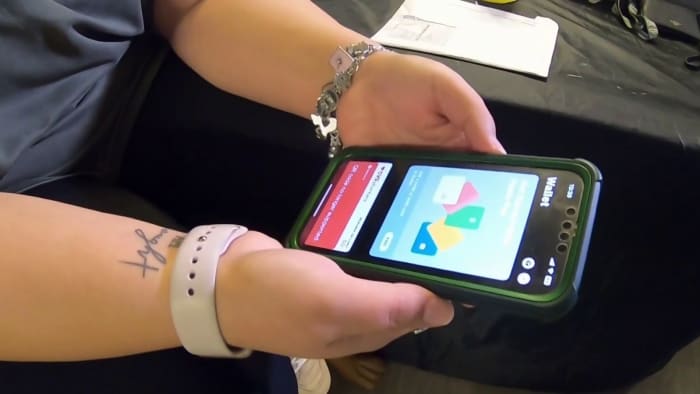Spring, Texas – Mobile payment apps are very popular. You can pay at stores with just your cell phone but along with that convenience comes risk. KPRC 2 Investigates has three ways you can protect your money and reduce the risk that thieves can get it.
Warning about having Apple Cash set up on your phone
If you have an iPhone you may have set up Apple Pay. But you may not have realized you also have what’s called Apple Cash on your device. Apple Cash is a peer-to-peer money transfer service that doesn’t include any protections. And one Spring woman who contacted our team found that out the hard way.
Single mom Stormi Spurlock has been saving her money to buy a home. So, you can imagine her anxiety when she woke up to multiple fraud alerts from Chase bank.
Three charges with Delta Airlines for $977 each, Macy’s for more than $500 and Best Buy for $1,000.
“I was freaking out. Like, ‘Oh my God my money is gone.’”
Spurlock was locked out of her bank account online, so she got her in car and booked it to Chase. A bank employee immediately helped Spurlock close her account and move her remaining money to a new account.
But two big transfers, one for $2,000 and another for $1,000 were sent to her Apple account on her phone. And she was locked out of it. Spurlock called Apple from the bank.
“Is there anything, can y’all transfer my money back to my bank? And they say no because my account was completely locked,” said Spurlock.
Thieves were able to move Spurlock’s money because she set up her Apple Pay with a debit card.
Apple Cash vs Apple Pay
If you have an iPhone you should know that you have Apple cash. Apple Cash is different from Apple Pay. Apple Cash is a peer-to-peer payment app like Venmo or Zelle but you may not have realized that Apple Cash is already on your phone even if you didn’t download it or set it up.
Spurlock had never even used Apple Cash but now thieves were using it to steal her money.
3 things you can do to protect yourself from thieves on your iPhone
1. Don’t use a debit card
Set up your Apple pay account with your credit card, not a debit card. Criminals target Apple cash because it doesn’t offer buyer protection. Once you send money to someone you can’t get it back.
2. Watch for spam texts
Don’t fall for phishing text messages with links, scammers will try to trick you by telling you there’s an iisue with your apple pay account.
3. Keep codes secret
Never give up 2-factor authentication codes via text message, over the phone or by email. Legitimate customer support agents will never ask for these codes. If someone wants you to give yours up, you’re dealing with a scammer and if you give them the code you’re giving them access to your apple pay.
We reached out to Apple for Spurlock. She should get her Apple account access back and she hopes her $3,000 is still there and her account was locked before thieves were able to transfer it to themselves.
If a scammer tricks you on Apple Pay, there are some things you can do to try and get your money back.
Apple Resources
Apple provides a number of resources to help users avoid scams when using Apple Cash, which can all be found here. Within this support article, in addition to providing tips for how to avoid scams, Apple also shares what to do if users have any questions or concerns about a transaction, how to recognize scams, and a bit more about the security and privacy features of using Apple Cash.
You can also review Apple Pay’s security and privacy overview here, which includes more details about Apple Cash.
Copyright 2023 by KPRC Click2Houston – All rights reserved.
Credit: Source link











































